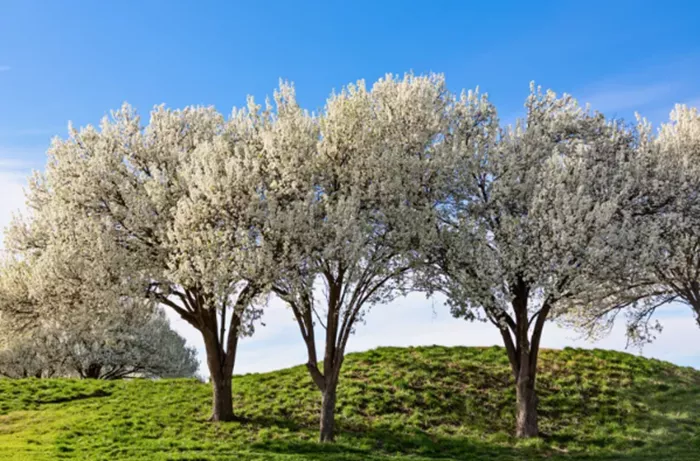A yard filled with majestic trees can create a beautiful and peaceful environment. However, selecting the right tree is crucial. Some trees are known for being invasive or having weak limbs, which can lead to problems. To guide homeowners, we consulted Doug Still, a consulting arborist and host of the This Old Tree podcast, who shared several trees you should avoid planting in your yard.
1. Weeping Willow (Salix babylonica)
The graceful, arching branches of the weeping willow are appealing, but Still advises against planting one. “Weeping willows are large trees that require ample space,” he explains. In smaller yards, these fast-growing trees can overpower the landscape, competing for water and nutrients. Regular pruning might help, but it can distort the tree’s natural shape. Additionally, weeping willows are notorious for invading sewer pipes and septic systems in search of water. Still recommends planting them in public parks near streams or ponds instead of in small yards.
2. Ash (Fraxinus excelsior)
Ash trees are admired for their strength and unique foliage, but they are now threatened by the emerald ash borer, a pest that can kill them. “Avoid planting any type of ash tree,” Still advises. While there are treatment options, they require continuous insecticide applications throughout the tree’s life. Instead, consider selecting a different tree with a similar look.
3. Lombardy Poplar (Populus nigra)
The tall Lombardy poplar is another tree homeowners should reconsider. These trees are highly susceptible to canker diseases, which can lead to significant damage. Still notes that infection often occurs when the bark is harmed, making the tree more vulnerable to breakage. It is better to choose native poplar species that are more resilient to local diseases and blend better into the landscape.
4. Bradford Pear (Pyrus calleryana)
Bradford pears may reach heights of 50 feet, but they are notorious for having weak branches that easily crack. They are also invasive and have been banned in some states. Furthermore, their flowers emit a strong, unpleasant odor.
5. Silver Maple (Acer saccharinum)
While popular, silver maples have a reputation for being problematic. Their rapid growth can weaken their branches, making them susceptible to wind damage. Although they can be beautiful when planted in open areas away from structures, their roots grow close to the surface, making them unsuitable for smaller yards.
6. Staghorn Sumac (Rhus typhina)
Staghorn sumac is an attractive small tree, but it can become invasive in certain areas. It spreads through underground runners, which can quickly lead to an overgrown area if not properly managed. If you consider planting this tree, it’s best to check with local experts first.
7. Mulberry (Morus rubra)
Mulberry trees can add fruit to your landscape, but they can also create a mess. Their abundant fruit can stain yards, decks, and sidewalks. While the berries attract birds, the birds can contribute to additional messiness. Furthermore, mulberry trees spread roots that may deplete nutrients from nearby plants.
In summary, choosing the right trees for your yard is essential for maintaining a beautiful landscape. By avoiding these specific trees, you can prevent potential problems and enjoy a healthier outdoor environment.
Related topics:
- One-Third of All Known Plants Live on Islands
- Desert Plants Also Suffer from Extreme Heat
- Plant Battles: Competing for Pollinators’ Attention


